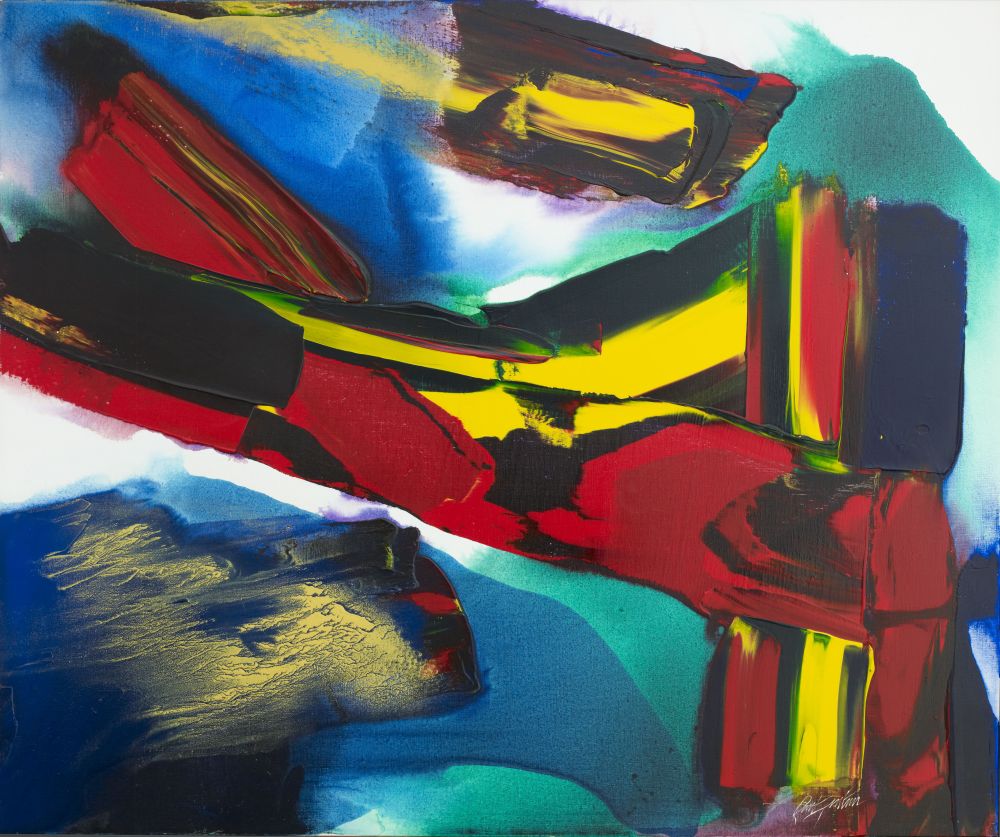Paul Jenkins

Selected Works

Paul Jenkins
Phénomènes Estuary Landing Place, 1998
Acrylique sur toile
127 x 152 cm
Some of the works depicted are no longer available.
Biography
For Paul Jenkins, colour is a sensation, a sensory experience rather than a representation of reality. His works are phenomena in themselves, as their evocative titles show, far from any figuration.
Paul Jenkins (1923-2012), originally from Kansas City, is an artist with multiple influences and an international career. After studying at the Kansas City Institute of Art, he collaborated with the ceramicist James Weldon, whose approach to color would profoundly influence his work. He then continued his training by working on sets at the Cleveland Play House, a theater school. After World War II, he moved to Pittsburgh, where he joined a group of artists and writers supported by patron Gladys Schmidt. It was there that he began to make a name for himself, exhibiting at the Outline Gallery, a popular place for avant-garde artists run by Elizabeth Rockwell. In 1948, he moved to New York to study at the Art Students League, where he immersed himself in the writings of the Russian mystic George Gurdjieff, particularly his ideas on spiritual transcendence and the definition of objective art. In 1953, he moved to Paris, where he met major figures of modern art such as Jean Dubuffet, Georges Mathieu, Pierre Soulages, Sam Francis and Claire Falkenstein. In 1955, he organized his first solo exhibition at the Zoe Dusanne Gallery in Seattle, while participating in the exhibition *Foreign Artists in France* at the Petit Palais. The following year, the Stadler Gallery in Paris presented his works, and the Martha Jackson Gallery in New York also devoted an exhibition to him.
Far from being an artist who can be easily categorized, his influences are multiple. While he shares certain traits with Jackson Pollock and Mark Rothko, he also draws inspiration from the art of Matisse and Kandinsky, while drawing inspiration from Eastern mysticisms such as Zen Buddhism and the I Ching, a fundamental text of Chinese philosophy. This spiritual approach deeply influences his pictorial practice. Jenkins pushes the limits of traditional painting, developing a brushless method in which he drips colors directly onto the canvas, sometimes manipulating them with a knife or swinging the canvas. This process allows the pigments to settle randomly, creating shapes and compositions dictated by the material itself.
His vision of color and painting goes beyond simple representation: for him, color is a sensation, a sensory experience rather than a representation of reality. His works are phenomena in themselves, as their evocative titles show, far from any figuration.
In the 1980s, Jenkins completed several international public commissions and created a large body of lithographs. In 1998, he published an album with the Bouquinerie de l'Institut, now the Galerie de l'Institut, which focuses on shamanism and the colorful expression of spiritual experience.
His vision of color and painting goes beyond simple representation: for him, color is a sensation, a sensory experience rather than a representation of reality. His works are phenomena in themselves, as their evocative titles show, far from any figuration.
In the 1980s, Jenkins completed several international public commissions and created a large body of lithographs. In 1998, he published an album with the Bouquinerie de l'Institut, now the Galerie de l'Institut, which focuses on shamanism and the colorful expression of spiritual experience.
